Learning the Basics of Sewing: A Comprehensive Guide
Welcome to the wonderful world of sewing! If you've ever looked at a beautifully crafted garment or a cozy quilt and thought, "I wish I could make that," then you're in the right place. This guide provides essential information for beginners looking to learn sewing. It covers tools, techniques, and projects to help you develop skills and confidence in your sewing journey. Whether you're aiming to create a stunning dress, a practical tote bag, or even simple home decor, understanding the basics of sewing is the first step in your creative adventure.
Understanding the basic tools is crucial for any sewing project. Imagine trying to bake a cake without a mixer or measuring cups—sewing is no different! Having the right tools can make your sewing experience smoother and more enjoyable. Here’s a quick rundown of the must-have items:
- Sewing Machine: The heart of your sewing setup. Choose one that fits your needs and budget.
- Needles: Various types for different fabrics. A universal needle is a great starting point.
- Threads: Invest in quality threads; they make a difference in the durability of your projects.
- Measuring Tools: A measuring tape, ruler, and fabric scissors are essential for accuracy.
With these tools in hand, you’ll be ready to tackle your first project with confidence!
Fabric selection can greatly impact your sewing experience. Choosing the right fabric is like picking the right paint for your canvas—it sets the tone for your entire project. This section discusses various fabric types, their properties, and tips for choosing the right fabric for your projects to ensure success.
When it comes to sewing, not all fabrics are created equal. Here’s a quick look at some popular fabric types:
- Cotton: Soft, breathable, and easy to sew, making it perfect for beginners.
- Linen: Lightweight and breathable, but can be tricky to handle due to its tendency to wrinkle.
- Polyester: Durable and resistant to wrinkles, great for garments that need to hold their shape.
Each fabric has unique characteristics that can affect your sewing projects and the final outcome. For instance, cotton is forgiving and easy to manipulate, while polyester might require a bit more finesse.
This subsection explores the differences between natural and synthetic fabrics, highlighting their benefits and drawbacks. Natural fabrics, like cotton and linen, are breathable and comfortable, making them ideal for clothing. On the other hand, synthetic fabrics, such as polyester and nylon, offer durability and resistance to shrinking, which can be a lifesaver for certain projects. Understanding these differences will help you make informed choices for your sewing projects.
Discover how fabric weight and texture influence your sewing techniques and project outcomes. Fabric weight can range from lightweight (like chiffon) to heavy (like denim). The texture can also vary, from smooth to textured, affecting how your fabric behaves during sewing. Understanding these factors is key to selecting the right fabric for your intended design. For instance, heavier fabrics may require a different needle size and stitch length compared to lighter ones.
Properly preparing your fabric before sewing is essential for achieving the best results. This means pre-washing to avoid shrinkage, cutting accurately to ensure your pieces fit together, and marking your fabric for guidance during sewing. Taking these steps can save you a lot of headaches down the road and ensure that your finished project looks as good as you envisioned.
Mastering basic sewing techniques is vital for beginners. Think of these techniques as the building blocks of your sewing skills. This section introduces essential skills like stitching, hemming, and finishing seams, providing a solid foundation for more advanced projects. For example, learning how to sew a straight stitch is like learning to ride a bike—you’ll use it for everything!
Explore various types of stitches, including straight, zigzag, and decorative stitches. Each stitch serves a unique purpose. The straight stitch is your go-to for most seams, while the zigzag stitch can help prevent fabric from fraying. Understanding when and how to use each stitch will enhance your sewing skills and project versatility.
Learn about different hemming methods and finishing techniques to give your projects a polished look. Techniques like the blind hem or the rolled hem can elevate your garments, making them look professionally finished. These skills are important for creating durable and professional-looking garments and items, ensuring that your hard work pays off.
Engaging in simple sewing projects is a great way to practice your skills. Start with easy projects like pillowcases, tote bags, or simple skirts. These projects will help you build confidence and creativity in your sewing journey. Remember, every expert was once a beginner, so don’t be afraid to make mistakes—embrace them as part of the learning process!
Q: What sewing machine should I buy as a beginner?
A: Look for a machine that is user-friendly and has basic stitches. Brands like Brother and Singer offer great options for beginners.
Q: How do I choose the right fabric for my project?
A: Consider the project type, the fabric's weight, and its drape. Cotton is usually a safe bet for beginners.
Q: Can I sew without a sewing machine?
A: Absolutely! Hand sewing is a valuable skill and can be used for smaller projects or repairs.
Q: How do I fix mistakes in my sewing?
A: Don’t panic! Most mistakes can be fixed by unpicking stitches or making adjustments. Practice makes perfect!
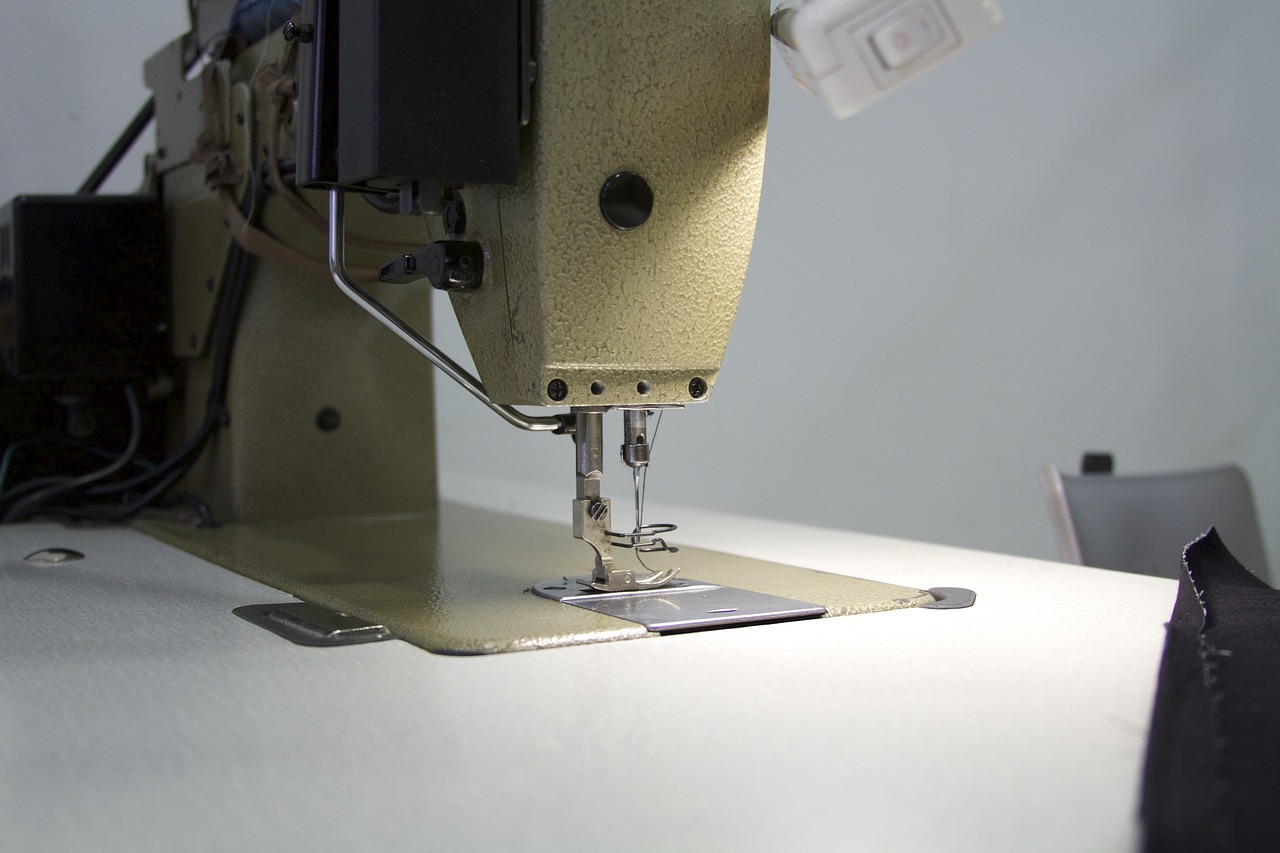
Essential Sewing Tools
When diving into the world of sewing, having the right tools at your fingertips can make all the difference. Think of it as equipping yourself with the best gear before embarking on an adventure. Just like a chef wouldn’t dream of cooking without their knives, a sewer needs a solid toolkit to create beautiful projects. So, what are these essential tools that every beginner should have? Let’s break it down!
First and foremost, a sewing machine is a game changer. While hand sewing is a valuable skill, a machine can speed up the process, allowing you to tackle larger projects with ease. Look for a machine that suits your needs—whether you're sewing simple patterns or tackling more complex designs. Don't forget to familiarize yourself with its features, as each machine can have unique functionalities that enhance your sewing experience.
Next up, you’ll need needles—and not just any needles! There are various types tailored for different fabrics and techniques. For instance, universal needles are great for most sewing tasks, but if you’re working with knits, a ballpoint needle is your best friend. It’s like choosing the right tool for the job; using the wrong needle can lead to frustrating results.
Equally important is thread. The thread you choose can greatly affect the quality of your stitches. Opt for high-quality polyester or cotton thread that matches your fabric; it’s like choosing the right paint for your masterpiece. Additionally, investing in a variety of thread colors will allow you to be creative and versatile in your projects.
Now, let’s talk about measuring tools. A good tape measure is essential for getting accurate dimensions, while a ruler or quilting ruler can help with precise cutting. You can’t build a house without a level, right? Similarly, accurate measurements are crucial for sewing. Having a seam gauge handy will also help you with smaller measurements, ensuring your hems and seams are perfect.
And what about cutting? A quality pair of fabric scissors is non-negotiable. Using regular scissors can dull your blades and ruin your fabric. It’s like trying to cut a steak with a butter knife—frustrating and ineffective! Additionally, consider investing in a rotary cutter and cutting mat for those who prefer a quicker, more efficient way to cut fabric.
To keep everything organized, a sewing kit is invaluable. This should include pins, safety pins, a seam ripper (yes, you’ll need this for those inevitable mistakes), and a variety of other tools that will make your sewing journey smoother. It’s like having a toolbox; you never know when you’ll need a specific tool!
Here’s a quick overview of some essential sewing tools in a table format:
| Tool | Purpose |
|---|---|
| Sewing Machine | Automates the sewing process, allowing for faster and more consistent stitches. |
| Needles | Different types for various fabrics and techniques. |
| Thread | Holds fabric pieces together; quality affects stitch integrity. |
| Measuring Tools | Ensures accurate dimensions for pieces. |
| Fabric Scissors | Designed specifically for cutting fabric to avoid fraying. |
| Sewing Kit | Contains various tools needed for sewing projects. |
In conclusion, equipping yourself with these essential sewing tools will not only enhance your sewing experience but also build your confidence as you embark on your creative journey. Remember, having the right tools is just as important as the skills you develop along the way. So gather your supplies, and let’s get sewing!
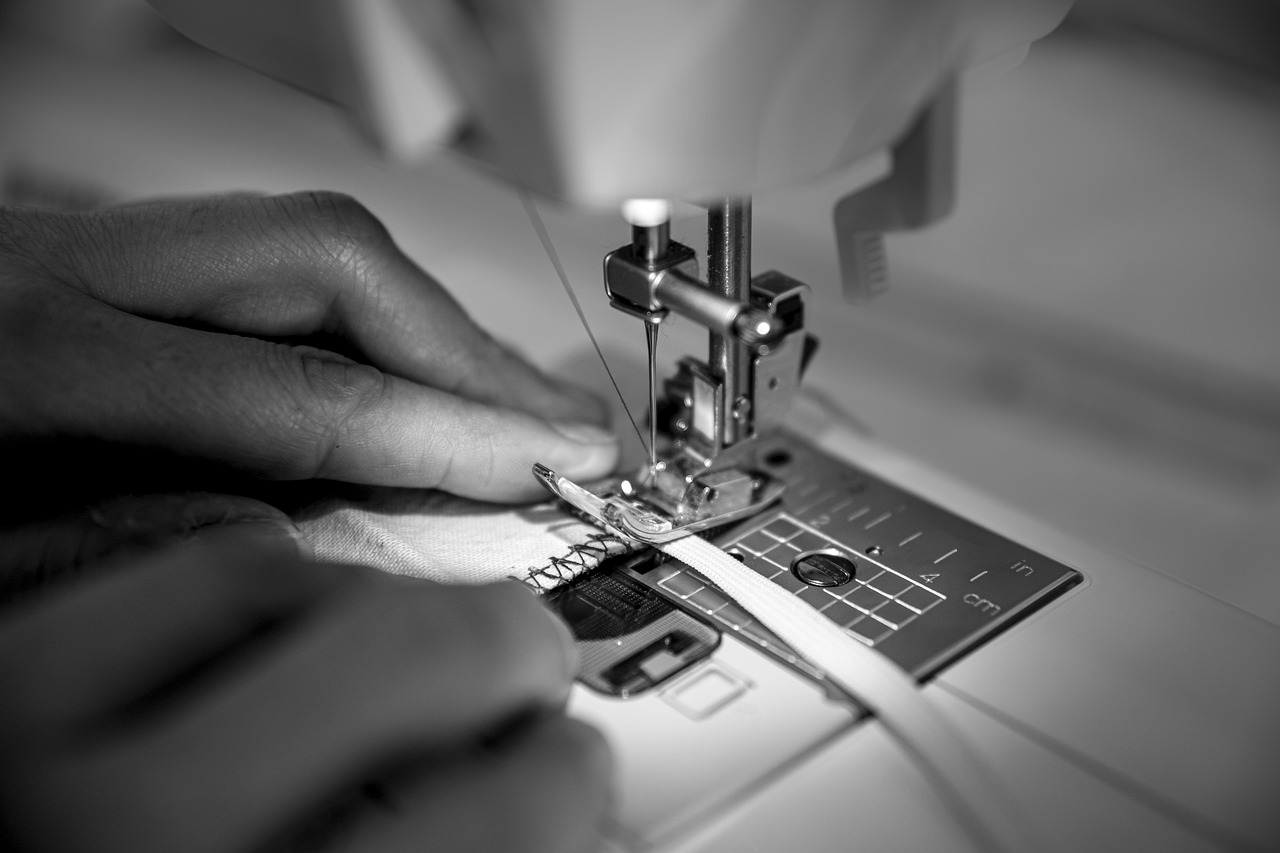
Choosing the Right Fabric
When it comes to sewing, one of the most critical decisions you'll make is . The fabric you select can make or break your project, influencing not just the final appearance but also the ease of sewing and the durability of the finished item. Imagine trying to sew a delicate dress with a heavy canvas fabric—it's a recipe for frustration! So, how do you navigate the vast world of fabrics? Let's dive into the essentials.
First off, you need to understand that fabrics come in a variety of types, each with its own unique properties. Some fabrics are natural, like cotton and linen, while others are synthetic, such as polyester and nylon. Each type has its own set of characteristics that can affect your sewing experience. For instance, natural fabrics are often breathable and comfortable, making them perfect for summer garments, while synthetic fabrics can be more durable and resistant to wrinkles, which is great for everyday wear.
But it’s not just about the type of fabric; you also need to consider fabric weight and texture. Lighter fabrics like chiffon or georgette are fantastic for flowy garments, but they can be tricky to sew because they tend to slip and slide. On the other hand, heavier fabrics like denim provide structure but can be more challenging to work with if you're a beginner. Understanding these factors is crucial. For example, if you're making a cozy winter blanket, you might want to opt for a heavier fabric like fleece. Conversely, if you're sewing a summer blouse, a lightweight cotton would do the trick.
To help you make informed decisions, here’s a quick comparison of some common fabric types in a table:
| Fabric Type | Properties | Best Uses |
|---|---|---|
| Cotton | Soft, breathable, and easy to sew | Shirts, dresses, quilts |
| Linen | Highly breathable, natural texture | Summer garments, tablecloths |
| Polyester | Durable, wrinkle-resistant | Everyday wear, activewear |
| Silk | Luxurious, soft, and slippery | Formal wear, scarves |
Now that you have a grasp on the types of fabrics, let's talk about how to prepare your fabric before you start sewing. This is where the magic happens! Pre-washing your fabric is essential to prevent shrinkage later on. Imagine finishing a beautiful dress only to have it shrink in the wash—what a disappointment! So, always pre-wash and iron your fabric to remove any wrinkles before cutting.
In summary, choosing the right fabric is about understanding the many options available and how they align with your project goals. Whether you're whipping up a cozy quilt or a stylish summer dress, taking the time to select the right fabric will pay off in the long run. So next time you’re at the fabric store, remember to consider the type, weight, and texture of the fabric. It’s like picking the right ingredients for a recipe—get it right, and the results will be delicious!
- What is the best fabric for beginners? Cotton is often recommended due to its ease of use and versatility.
- Can I mix different fabrics in one project? Yes, but make sure they have similar care instructions and weights for the best results.
- How do I know if my fabric is suitable for my project? Consider the fabric's properties, such as weight and drape, and how they match your project's requirements.

Understanding Fabric Types
When diving into the world of sewing, one of the most exciting yet daunting aspects is the variety of fabrics available. Each type of fabric comes with its own personality, and understanding these differences can significantly enhance your sewing experience. Think of fabric types as different colors on an artist's palette; each one offers unique qualities that can transform your project from ordinary to extraordinary.
Let's start with the most common fabric types that every beginner should know:
- Cotton: A staple in the sewing community, cotton is loved for its versatility and ease of use. It’s breathable, soft, and perfect for a variety of projects, from quilts to clothing. Plus, it comes in a plethora of prints and colors, making it a favorite for beginners.
- Linen: Known for its natural luster and crisp texture, linen is a fantastic choice for summer garments. However, it wrinkles easily, so keep that in mind if you're aiming for a polished look.
- Polyester: This synthetic fabric is durable and resistant to shrinking and stretching. It’s often blended with other fibers to enhance their properties, making it a practical choice for many sewing projects.
- Silk: If you want to add a touch of luxury to your sewing, silk is the way to go. It's smooth and has a beautiful drape, but it can be tricky to work with due to its slippery nature.
Understanding the characteristics of these fabrics is crucial for making informed decisions about your projects. For instance, if you're sewing a summer dress, you might lean towards cotton or linen for their breathability. On the other hand, if you're crafting a cozy winter garment, polyester blends can provide warmth and durability.
But it doesn't stop there! Fabric weight and texture also play significant roles in how your final product will turn out. Lightweight fabrics, like chiffon, are great for flowy garments, while heavier fabrics, like denim, are perfect for structured pieces. The texture can add visual interest and affect how the fabric drapes and moves. A fabric's weight and texture can change the way your sewing machine handles it, so it's always a good idea to test a small piece first.
In summary, understanding fabric types is not just about knowing what they are; it's about learning how to choose the right one for your project. By considering factors like breathability, drape, and ease of handling, you can set yourself up for success. So, the next time you're at the fabric store, take a moment to feel the textures and visualize how each fabric could bring your sewing ideas to life!
Q: How do I know which fabric to choose for my project?
A: Consider the purpose of your project. Think about the season, the style you want, and how the fabric will behave when sewn. Researching fabric types and their properties can also help guide your decision.
Q: Can I mix different fabric types in one project?
A: Yes, you can mix fabrics, but be mindful of their properties. For example, pairing a stretchy fabric with a non-stretchy one might lead to challenges in fit and drape. Always test how they work together before committing.
Q: What should I do if I’m unsure about a fabric’s characteristics?
A: Don’t hesitate to ask for help at your local fabric store. Many staff members are experienced sewers and can provide valuable insights. Additionally, online forums and sewing communities can be great resources for advice.

Natural vs. Synthetic Fabrics
When diving into the world of sewing, one of the most critical decisions you'll face is choosing between natural and synthetic fabrics. Each type comes with its own set of characteristics, benefits, and drawbacks that can significantly influence your sewing projects. Understanding these differences is vital for any beginner looking to create beautiful and durable pieces.
Natural fabrics, such as cotton, linen, and wool, are derived from plants and animals. They are often celebrated for their breathability, comfort, and eco-friendliness. For instance, cotton is soft and absorbent, making it perfect for summer clothing, while linen, known for its durability and moisture-wicking properties, is ideal for warm-weather garments. However, natural fabrics can be more susceptible to wrinkles and may require more delicate care during washing.
On the other hand, synthetic fabrics like polyester, nylon, and acrylic are man-made and designed to mimic the properties of natural fibers. These fabrics are often more affordable, resistant to wrinkles, and can be engineered for specific uses, such as moisture-wicking for athletic wear. However, they may lack the breathability and comfort of their natural counterparts, leading to discomfort in warmer conditions.
To help you make an informed choice, here’s a quick comparison:
| Fabric Type | Advantages | Disadvantages |
|---|---|---|
| Natural Fabrics |
|
|
| Synthetic Fabrics |
|
|
Ultimately, the choice between natural and synthetic fabrics depends on the specific project you have in mind. Are you creating a cozy winter sweater or a breezy summer dress? Each fabric type has its strengths and weaknesses, making it essential to consider the intended use of your fabric before making a purchase. So, the next time you're at the fabric store, take a moment to weigh your options and choose wisely!
Q: Can I mix natural and synthetic fabrics in one project?
A: Absolutely! Many sewing enthusiasts successfully combine both types for unique textures and effects. Just be mindful of their differing care requirements.
Q: Which fabric is best for beginners?
A: Cotton is often recommended for beginners due to its ease of use, availability, and versatility. It handles well and is forgiving for those still mastering their sewing skills.
Q: How do I care for natural fabrics?
A: Natural fabrics often require gentle washing and air drying to maintain their quality. Always check the care label for specific instructions.
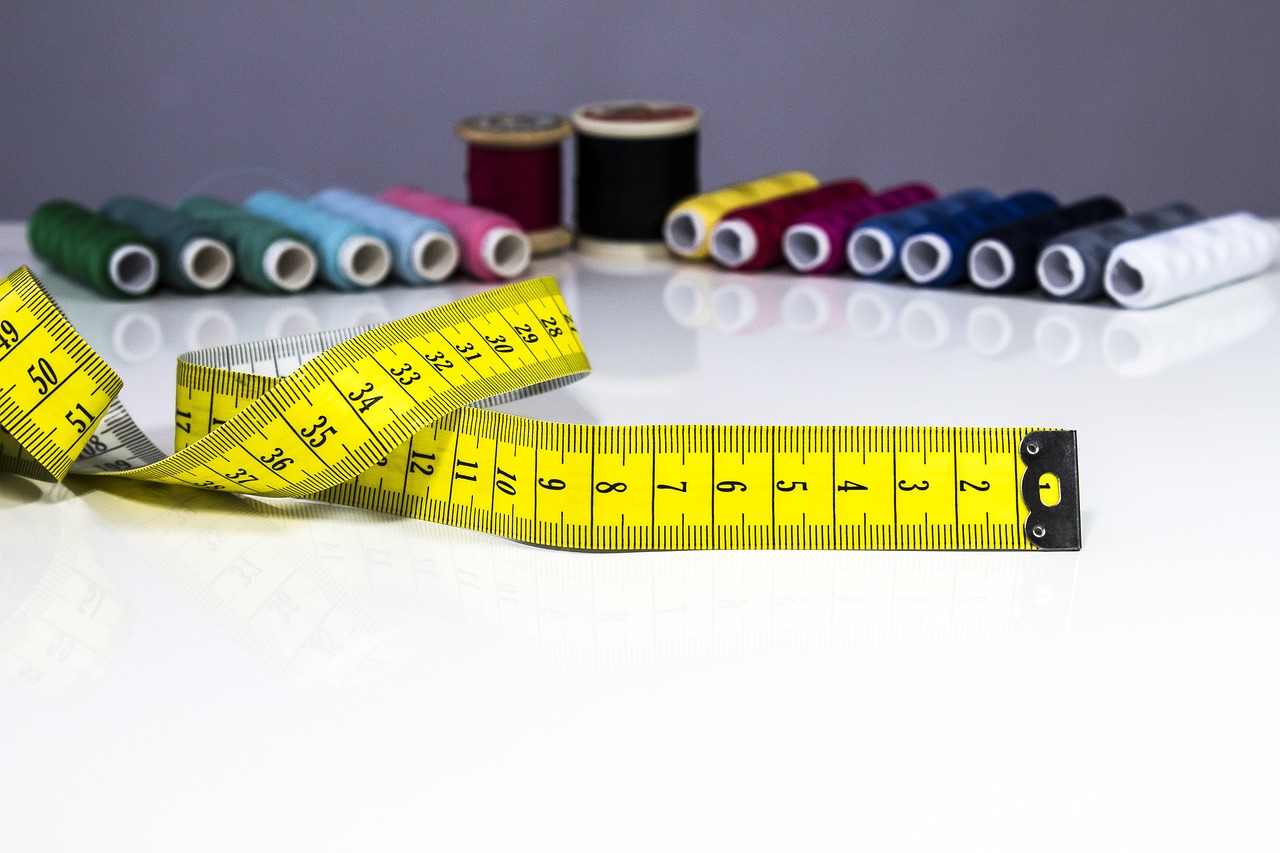
Fabric Weight and Texture
When it comes to sewing, understanding fabric weight and texture is pivotal to achieving the desired outcome for your projects. Fabric weight is typically measured in grams per square meter (GSM), and it can significantly influence how your finished garment or item looks and feels. For instance, lightweight fabrics (under 150 GSM) are perfect for breezy summer dresses, while heavier fabrics (over 300 GSM) work well for structured coats or jackets. Knowing the weight of your fabric allows you to make informed decisions about the type of projects you can undertake.
Texture, on the other hand, refers to the surface feel of the fabric, which can range from smooth to rough, soft to stiff. The texture not only affects the comfort of the finished product but also how it drapes and holds its shape. For example, a soft, flowing fabric like chiffon will create a very different silhouette compared to a stiff canvas. When choosing fabric, consider how its weight and texture will work together to create the look you want.
To further illustrate the importance of fabric weight and texture, here’s a quick comparison of some common fabric types:
| Fabric Type | Weight (GSM) | Texture | Best For |
|---|---|---|---|
| Cotton | 150-200 | Soft, breathable | Shirts, dresses, quilts |
| Linen | 150-250 | Textured, crisp | Summer clothing, tablecloths |
| Denim | 300+ | Sturdy, rough | Jeans, jackets |
| Silk | 100-150 | Smooth, luxurious | Evening wear, scarves |
When selecting fabric, it’s also crucial to consider how the weight and texture will interact with your sewing techniques. For instance, lightweight fabrics may require different handling than heavier ones. You might need to adjust your sewing machine tension or use a different needle type to accommodate the fabric's characteristics. Additionally, the texture can affect the type of seams and finishes you choose, as some fabrics fray more easily than others.
In conclusion, taking the time to understand the weight and texture of your chosen fabric can make all the difference in your sewing projects. It’s not just about picking a pretty print; it’s about ensuring that the fabric behaves the way you want it to during the sewing process and ultimately results in a beautiful, functional piece. So, the next time you’re shopping for fabric, remember to feel the texture and consider the weight—it’s a game-changer!
- What is fabric weight? Fabric weight refers to the density of the fabric, usually measured in grams per square meter (GSM).
- How does fabric texture affect sewing? The texture can influence how the fabric drapes and behaves during sewing, requiring different techniques for different textures.
- Can I use a lightweight fabric for a structured project? While it's possible, it may not hold its shape well. It's best to choose a fabric weight that complements the design.
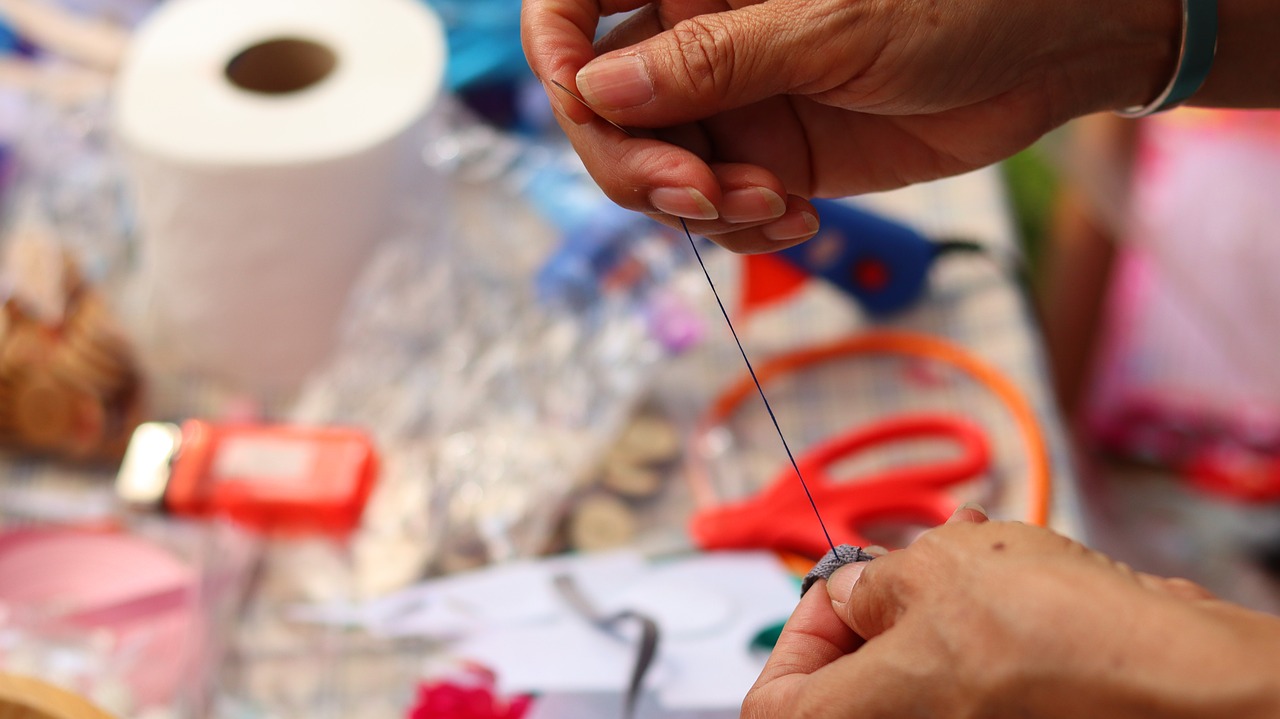
Preparing Your Fabric
Before diving into the world of sewing, it's essential to understand that the preparation of your fabric can significantly influence the outcome of your projects. Think of it as laying the foundation for a house; if the base is strong and well-prepared, the structure will stand tall and beautiful. In sewing, this preparation involves several critical steps that ensure your fabric is ready to be transformed into something spectacular.
The first step in preparing your fabric is pre-washing. This process is not just a suggestion; it’s a necessity. Fabrics can shrink, bleed, or change texture after the first wash. By washing your fabric beforehand, you minimize these risks and ensure that your finished project maintains its intended size and color. Use a mild detergent and follow the care instructions on the fabric label. After washing, make sure to dry your fabric properly—either air dry or tumble dry, depending on the fabric type.
Next, let's talk about cutting. Proper cutting is akin to making precise measurements before cutting a cake—you want to ensure every piece is just right. Use a sharp pair of fabric scissors or a rotary cutter for clean edges. When cutting, always lay your fabric flat on a cutting mat and ensure that it is wrinkle-free. This step is crucial because any wrinkles can lead to uneven cuts and, ultimately, a less polished final product. To assist with cutting, consider using a cutting guide or a pattern which can help you visualize the pieces you need and prevent fabric wastage.
Finally, we arrive at the marking techniques. Marking your fabric accurately is like drafting a blueprint before construction. It guides you on where to sew, cut, or fold. Use fabric chalk or a water-soluble pen to make your marks, as these will wash out easily. Avoid using regular pens or pencils, as they can leave permanent marks on your fabric. Make sure to mark all essential points, such as darts, seam allowances, and pattern notches, to ensure you follow the intended design closely.
In summary, preparing your fabric involves three key steps: pre-washing, cutting, and marking. By taking the time to properly prepare your fabric, you set yourself up for sewing success. Remember, a well-prepared fabric not only enhances your sewing experience but also leads to more professional-looking results. So, are you ready to get started on your sewing journey? With these preparation tips in your toolkit, you’ll be well on your way to creating beautiful, handmade items!
- Why is pre-washing my fabric important? Pre-washing helps prevent shrinkage and color bleeding after your project is complete.
- What tools do I need for cutting fabric? A sharp pair of fabric scissors or a rotary cutter, along with a cutting mat, are essential for clean cuts.
- How can I mark my fabric without leaving permanent marks? Use fabric chalk or water-soluble pens, as they can be easily washed out later.
- What should I do if my fabric shrinks after washing? Always pre-wash your fabric before cutting to avoid surprises. If it has already shrunk, adjust your pattern accordingly.

Basic Sewing Techniques
Mastering is vital for beginners who are eager to dive into the world of sewing. Think of these techniques as the building blocks of your sewing journey. Without a solid foundation, your creations might not turn out as expected. So, let’s break down the essential skills you need to get started, ensuring you feel equipped and confident as you tackle your first projects.
First up, let’s talk about stitching. This is the core of sewing—every project you undertake will involve some form of stitching. There are several types of stitches, each serving a unique purpose. For instance, the straight stitch is your go-to for most seams, while the zigzag stitch is perfect for stretchy fabrics. Decorative stitches can add flair to your projects, allowing you to express your creativity. Understanding when and how to use each stitch is crucial, and practice will make you proficient over time.
Next, we have hemming and finishing techniques. Imagine you’ve just completed a beautiful skirt but left the edges raw—yikes! This is where hemming comes into play. Hemming not only prevents fraying but also gives your garments a polished look. There are various methods to hem, such as the double-fold hem, blind hem, and rolled hem. Each method has its own charm and is suited for different types of fabrics and designs. By mastering these techniques, you will elevate the quality of your sewing projects significantly.
Another essential technique is finishing seams. This is particularly important when working with fabrics that fray easily. Techniques like serging or using a zigzag stitch along the raw edges can help keep your seams intact, ensuring your projects withstand the test of time. Not only does this enhance durability, but it also contributes to a professional finish. Remember, a well-finished seam can make all the difference between a homemade look and a store-bought appearance.
Now, let’s not forget about the importance of pressing your seams as you sew. While it may seem like a minor detail, pressing can transform your sewing experience. It helps to shape your fabric and gives your seams a crisp, clean finish. A good iron is your best friend in sewing; it can help set your stitches and ensure that everything lays flat. So, don’t skip this step—make pressing a habit, and you’ll see a noticeable improvement in your finished projects.
To wrap up this section, let’s summarize the you’ll want to master:
- Stitching: Familiarize yourself with different types of stitches.
- Hemming: Learn various hemming methods for a polished finish.
- Finishing Seams: Use techniques to prevent fraying and enhance durability.
- Pressing: Incorporate pressing into your sewing routine for a professional look.
By focusing on these fundamental techniques, you will build a strong foundation for your sewing skills. Remember, every expert was once a beginner, so don’t be afraid to make mistakes and learn along the way. With practice and patience, you’ll soon find yourself sewing with confidence, ready to take on more complex projects!
Q: What is the best sewing machine for beginners?
A: Look for a machine that is user-friendly, has basic stitches, and is within your budget. Brands like Brother and Singer offer excellent options for beginners.
Q: How do I choose the right fabric for my project?
A: Consider the type of project you’re working on, the fabric’s weight, and its drape. For beginners, cotton is a great choice due to its ease of handling.
Q: What are some common mistakes to avoid when starting to sew?
A: Some common mistakes include not reading the pattern thoroughly, cutting fabric inaccurately, and skipping pressing seams. Take your time and double-check your work!
Q: How can I improve my sewing skills?
A: Practice regularly, take classes, and watch online tutorials. Joining a sewing community can also provide support and inspiration.
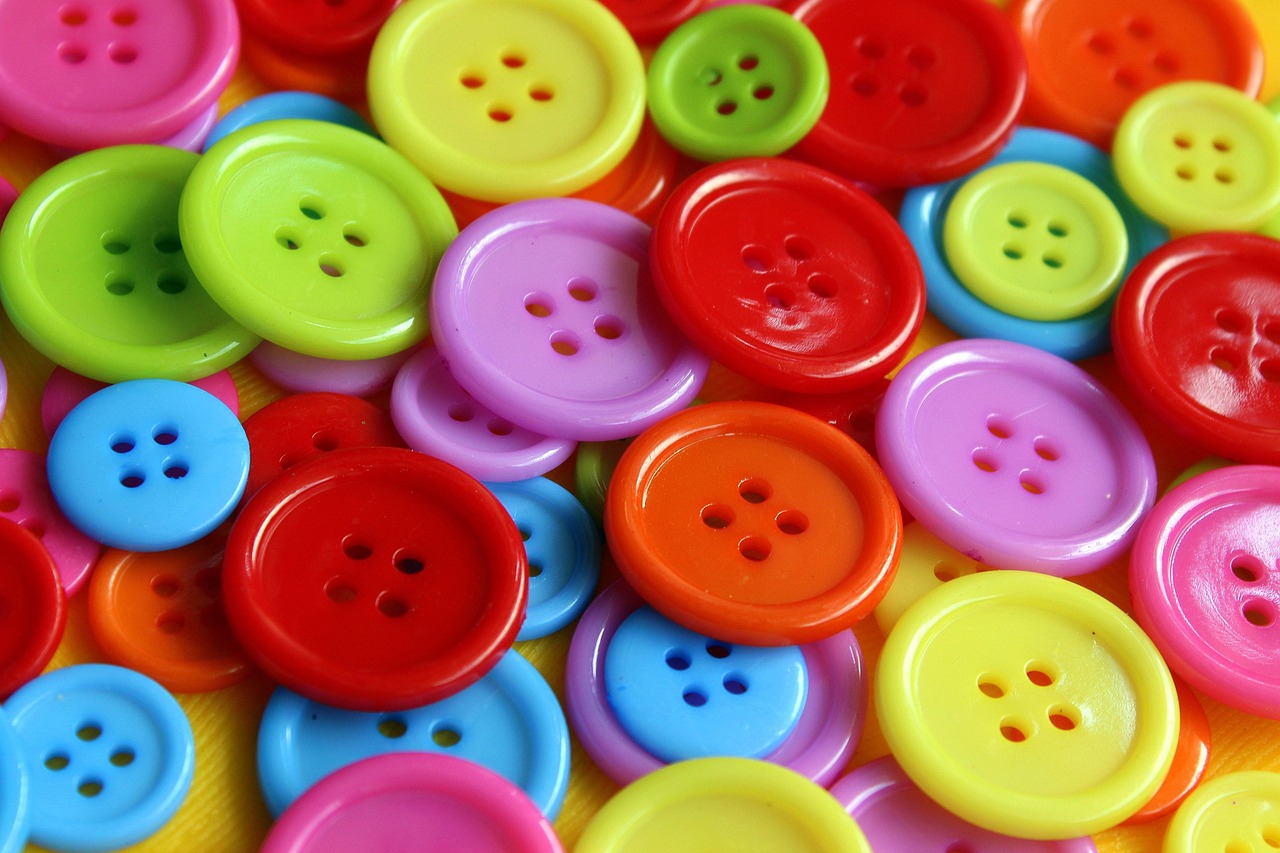
Learning Different Stitches
When it comes to sewing, stitches are your best friends. They’re like the magic spells that hold your fabric together and bring your creative visions to life. Understanding the different types of stitches is crucial for any beginner. Not only do they serve various purposes, but they also add character and flair to your projects. So, let’s dive into the world of stitches and explore what each one can do!
The most basic stitch you’ll encounter is the straight stitch. This is the go-to stitch for most sewing projects, especially when you’re joining two pieces of fabric together. Think of it as the bread and butter of sewing! It’s strong and reliable, making it perfect for seams. You can adjust the length of the stitch depending on your project; shorter stitches are great for delicate fabrics, while longer ones suit heavier materials.
Now, let’s talk about the zigzag stitch. This stitch is a little more versatile and is often used for finishing raw edges to prevent fraying. It’s like putting a protective coat on your fabric! You’ll find it particularly useful when working with stretchy materials, as it allows the fabric to maintain its elasticity. Plus, it can add a decorative touch to your projects if you play around with the stitch width and length.
But wait, there’s more! The decorative stitches are where the fun really begins. These stitches come in various patterns and designs, adding a unique flair to your creations. Whether you’re embellishing a garment or creating a piece of art on fabric, decorative stitches can transform a simple project into something extraordinary. Many sewing machines come with built-in decorative stitches, so don’t hesitate to explore what your machine has to offer.
For those of you looking to add a touch of elegance to your sewing, the blind hem stitch is a must-learn. This stitch is perfect for hemming garments without visible stitching on the front side. It’s like a magician’s trick—your hem looks neat and professional, while the stitching remains hidden. To master this stitch, practice on scrap fabric until you feel confident.
As you progress, you might want to experiment with more advanced stitches like the overlock stitch. This one is a game-changer for finishing edges and creating seams that stretch. It’s commonly used in knit fabrics and is essential for anyone looking to make their own activewear or fitted garments. Many sewing machines have an overlock feature, or you can invest in a serger for even more options.
In summary, learning different stitches is an exciting part of your sewing journey. Each stitch has its own purpose and can be used creatively to enhance your projects. Here’s a quick overview of the stitches we discussed:
| Stitch Type | Purpose | Best For |
|---|---|---|
| Straight Stitch | Joining fabric pieces | Most sewing projects |
| Zigzag Stitch | Finishing edges | Stretchy fabrics |
| Decorative Stitches | Embellishment | Creative projects |
| Blind Hem Stitch | Invisible hems | Garments |
| Overlock Stitch | Finishing edges and seams | Knit fabrics |
So, grab your sewing machine, and start experimenting with these stitches! The more you practice, the more confident you’ll become, and soon enough, you’ll be creating beautiful, professional-looking projects that showcase your unique style.
Q: How do I know which stitch to use for my project?
A: Consider the fabric type, the project’s purpose, and the finish you want. For example, use a straight stitch for seams and a zigzag stitch for edges.
Q: Can I use decorative stitches on all fabrics?
A: While decorative stitches can enhance many fabrics, it’s best to test on a scrap piece first, especially with delicate materials.
Q: What if my sewing machine doesn’t have certain stitches?
A: Don’t worry! You can often achieve similar effects with basic stitches by adjusting tension and stitch length. Alternatively, you can explore manual techniques for decorative effects.
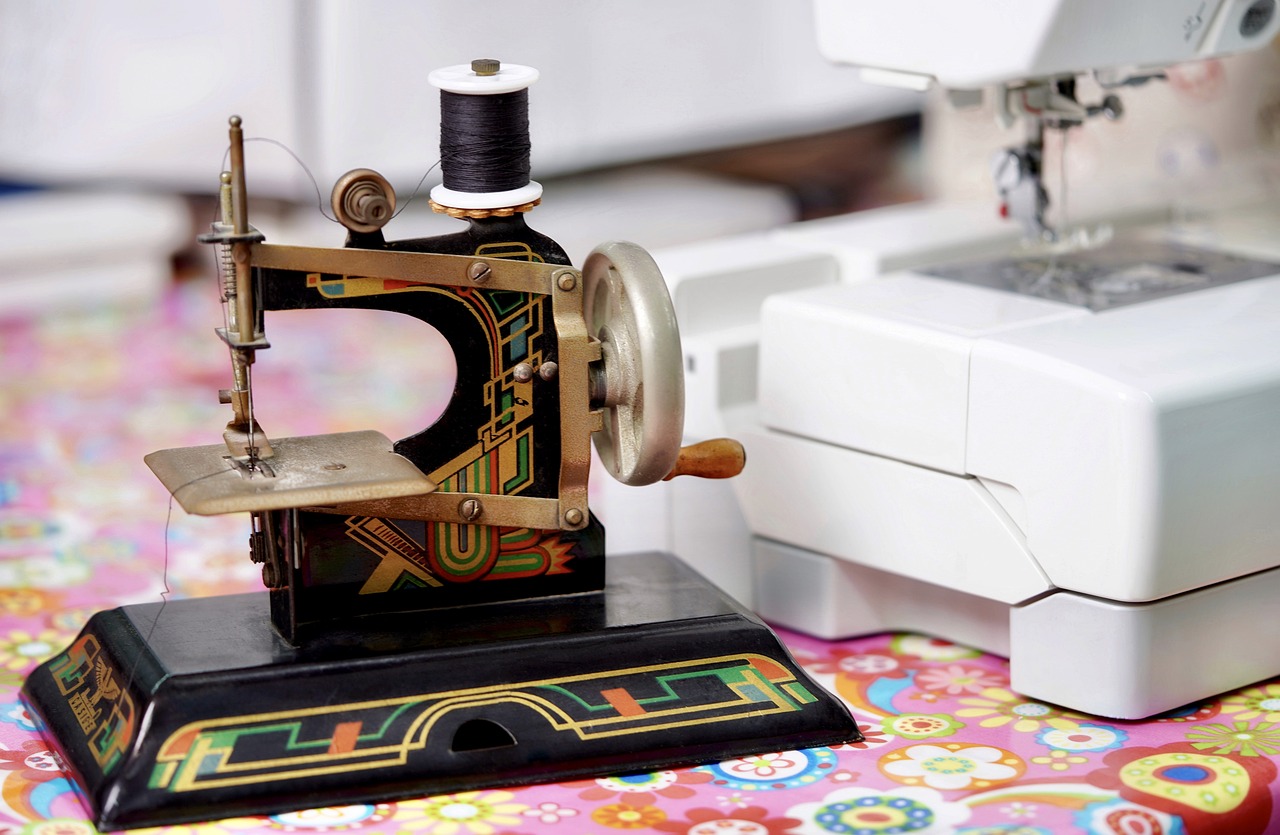
Hemming and Finishing Techniques
When it comes to sewing, hemming and finishing techniques are the unsung heroes of garment construction. They are essential for giving your projects that polished, professional look. Imagine wearing a garment with frayed edges or uneven hems—it just doesn’t feel right, does it? That's why mastering these techniques is crucial for any budding sewist. Let's dive into some of the most effective methods to ensure your creations look fabulous!
First up, let's talk about hemming. This is the process of finishing the raw edges of fabric to prevent fraying and to create a clean edge. There are several methods to choose from, depending on the type of fabric and the look you want to achieve. Here are a few popular hemming techniques:
- Double Fold Hem: This is a classic technique where you fold the edge of the fabric twice, securing it with a straight stitch. It's perfect for lightweight fabrics and offers a neat finish.
- Blind Hem: Ideal for formal garments, this method allows the hem to be virtually invisible from the front. It’s a bit tricky but worth the effort for that elegant touch.
- Rolled Hem: This technique is great for lightweight fabrics like chiffon. It involves rolling the edge of the fabric and sewing it down, creating a delicate finish.
Each of these techniques has its own charm and can be used in different scenarios. For instance, if you're working on a pair of casual shorts, a double fold hem would be perfectly suitable. However, if you're sewing a formal dress, you might want to opt for the blind hem to keep things classy.
Now, let’s shift gears and discuss finishing techniques. These are the methods used to secure raw edges and prevent them from fraying, which is especially important for fabrics that unravel easily. Here are some popular finishing techniques:
- Overlocking: This technique uses an overlock machine to encase the raw edge of the fabric. It’s fast and provides a professional finish, perfect for knit fabrics.
- Zigzag Stitch: If you don’t have an overlock machine, a simple zigzag stitch can do the trick! It’s easy to do and works well on woven fabrics.
- French Seam: This is a lovely method for lightweight fabrics. It encloses the raw edges within the seam, providing a clean, finished look.
Choosing the right finishing technique can make a world of difference in the durability and appearance of your projects. For example, if you’re sewing a lightweight blouse, a French seam would not only look beautiful but also keep the edges secure.
Lastly, remember that practice makes perfect! Don’t hesitate to experiment with different techniques on scrap fabric before applying them to your main project. This will help you gain confidence and finesse your skills. Sewing is as much about creativity as it is about technique, so find what works best for you and your style!
Q: What is the best hem for stretchy fabrics?
A: For stretchy fabrics like jersey, a zigzag stitch or a cover stitch is ideal as it allows the fabric to maintain its stretch.
Q: How do I prevent my fabric from fraying?
A: Using finishing techniques like overlocking, zigzag stitching, or French seams can help prevent fraying.
Q: Can I use a regular sewing machine for hemming?
A: Absolutely! Most hemming techniques can be done with a regular sewing machine. Just make sure to use the appropriate stitch for your fabric type.

Simple Sewing Projects for Beginners
Engaging in simple sewing projects is not just a way to practice your skills; it’s a fantastic opportunity to unleash your creativity while building your confidence. Starting with beginner-friendly projects allows you to familiarize yourself with your sewing machine, understand various fabrics, and master essential techniques without feeling overwhelmed. So, grab your sewing tools and let’s dive into some exciting projects that will have you sewing like a pro in no time!
One of the best beginner projects you can tackle is a simple tote bag. This project is not only functional but also allows you to experiment with different fabrics and embellishments. All you need are two pieces of fabric, some sturdy handles, and a sewing machine. You can customize your tote bag by choosing vibrant colors or fun patterns, making it a perfect accessory for shopping trips or beach days!
Another fantastic project is creating a pillowcase. This project is a great way to practice your straight stitching and learn how to finish seams neatly. Plus, you can choose fabrics that match your home decor or reflect your personality. A simple pillowcase requires minimal fabric and can be completed in just an hour or two, giving you that instant gratification that every beginner craves!
If you’re looking for something a bit more challenging but still beginner-friendly, consider making a simple skirt. This project introduces you to basic garment construction and allows you to learn how to take measurements, cut fabric, and sew darts or pleats. You can even personalize your skirt by adding pockets or a waistband that fits perfectly. The best part? You’ll end up with a stylish piece of clothing that you made yourself!
For those interested in home decor, sewing fabric coasters is a delightful project. These coasters are not only useful but also a great way to practice your quilting skills if you choose to add layers. You can use scraps of fabric to create unique designs, making each coaster a one-of-a-kind piece. Plus, they make excellent gifts for friends and family!
Lastly, don’t overlook the charm of sewing scrunchies. This trendy accessory is a hit among all ages and is incredibly easy to make. All you need is a strip of fabric, some elastic, and a sewing machine. Scrunchies are a fun way to showcase your fabric choices and are perfect for practicing your gathering stitches. They also make wonderful gifts or party favors!
As you embark on these sewing projects, remember that the journey is just as important as the destination. Each stitch you make is a step toward honing your craft, and with every completed project, you will gain the confidence to tackle even more complex designs. So, don’t be afraid to make mistakes; they are simply part of the learning process!
Q: What is the best fabric to start with?
A: Cotton is often recommended for beginners due to its ease of use and availability. It’s forgiving, easy to sew, and comes in countless patterns and colors!
Q: How do I choose the right sewing machine?
A: Look for a machine that offers basic stitches, is easy to use, and fits within your budget. Many brands offer beginner models that are lightweight and portable.
Q: Can I sew without a sewing machine?
A: Absolutely! Hand sewing is a valuable skill, and many of the projects mentioned can be completed by hand. It may take longer, but it’s a great way to practice precision.
Q: What should I do if I make a mistake?
A: Mistakes are normal! You can often fix them by unpicking stitches or adjusting your fabric. Take a deep breath, learn from it, and keep going!
Frequently Asked Questions
- What are the essential tools I need to start sewing?
To kick off your sewing journey, you’ll need a sewing machine, a variety of needles, threads, scissors, measuring tape, pins, and fabric. Think of these tools as your trusty sidekicks; they’ll help you conquer any sewing project that comes your way!
- How do I choose the right fabric for my project?
Choosing the right fabric is like picking the right ingredients for a recipe! Consider the project type, the fabric's weight, and its texture. For beginners, cotton is a fantastic choice due to its versatility and ease of handling. Just remember, not all fabrics are created equal!
- What is the difference between natural and synthetic fabrics?
Natural fabrics, like cotton and linen, come from plants or animals, while synthetic fabrics, like polyester, are man-made. Natural fabrics are breathable and often more comfortable, but they can shrink. Synthetic fabrics are durable and resistant to wrinkles, but they might not feel as cozy. It’s all about finding the right balance for your project!
- How should I prepare my fabric before sewing?
Preparing your fabric is crucial! Always pre-wash your fabric to prevent shrinkage later. Then, cut it accurately and mark any necessary lines or patterns. Think of this step as laying the groundwork for a solid foundation; it sets you up for success!
- What basic sewing techniques should I master?
Start with the basics like straight stitching, zigzag stitching, and hemming. These techniques are the building blocks of sewing. Once you feel comfortable with them, you can explore more advanced skills and let your creativity shine!
- Can you suggest some simple sewing projects for beginners?
Absolutely! Consider starting with simple projects like pillowcases, tote bags, or even a basic skirt. These projects are not only fun but also help you practice your skills without overwhelming you. Remember, every expert was once a beginner!



















